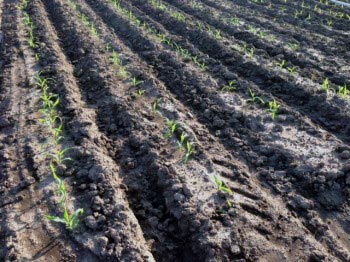 Suppressing soil nitrification and increasing Nitrogen Use Efficiency (NUE) is critical to reversing the N-fertilizer overuse and minimizing its environmental impact.
Suppressing soil nitrification and increasing Nitrogen Use Efficiency (NUE) is critical to reversing the N-fertilizer overuse and minimizing its environmental impact.
Global nitrogen (N) fertilizer consumption has increased 10-fold since 1960s, but food grain production has only tripled during this period, resulting in a decrease in NUE.
Of the 150 million tons of N-fertilizer currently applied to agricultural systems globally, up to 70 percent is not recovered by the crop and often results in negative environmental impact through pathways such as nitrate-leaching and nitrous oxide emissions, according to a report by William Schlesinger..
Nitrate is an important groundwater pollutant and nitrous oxide (N2O) is a powerful greenhouse gas. Annual economic losses from lost N-fertilizer is estimated at $90 billion. If this trend continues, annual N-fertilizer application will double by 2050 and global N2O emissions from agriculture will reach 19 million tons of N y-1 by then, according to Schlesinger.
Biological nitrification inhibition (BNI) is the ability of certain plants to suppress nitrifying activity by releasing nitrification inhibitors from root systems. This phenomenon has been observed in tropical grasses (Brachiaria spp.), food crops (sorghum) and wheat-wild relatives (Leymus spp.).
Japan International Research Center for Agricultural Sciences (JIRCAS) has been working together with three CGIAR Centers (International Center for Tropical Agriculture [CIAT], CIMMYT and International Crops Research Institute for the Semi-Arid Tropics [ICRISAT]) to advance this research and to develop technological components for BNI, including genetic and agronomic aspects.
The International BNI Workshop held at JIRCAS on March 2 and 3, 2015 was attended by 40 researchers representing four CGIAR Centers (CIAT, CIMMYT, ICRISAT and the International Livestock Research Institute [ILRI]) leading four CGIAR Research Programs (CRPs), including the Research Program on Climate Change, Agriculture and Food Security (CCAFS), Wheat (WHEAT), the Research Program on Dryland-Cereals, the Research Program on Livestock and Fish Livestock and Fish) and several Japanese organizations (national agricultural institutes, and universities).
The major conclusions from the workshop are:
- Reduced nitrification is essential to reduce N2O emissions and to improve NUE in agricultural systems. As part of a comprehensive approach incorporating genetic and agronomic management solutions, BNI-technology will reduce nitrogen losses, facilitate nitrogen retention and improve soil-health in next-generation climate-smart production systems.
- Developing and deploying BNI-technology requires collaboration among Japanese institutions, CGIAR centers and institutions from developing countries.
- The four CRPs will include BNI research in their program plans (2017-2026) and seek donor support as part of developing and deploying climate-smart agricultural practices.
- JIRCAS, together with CGIAR partners, formed a consortium on BNI Research for Sustainable Development, with JIRCAS in a convening and coordinating role.
Links to JIRCAS, participating CGIAR Centers and CRPs in BNI Research Consortium
http://www.jircas.affrc.go.jp/index.html
http://livestockfish.cgiar.org/
http://drylandcereals.cgiar.org/
http://wheat.org/
http://maize.org/
http://ccafs.cgiar.org/
http://ciat.cgiar.org/
https://www.cimmyt.org/en/
http://www.icrisat.org/
References:
Schlesinger W. 2009. On the fate of anthropogenic nitrogen. PNAS (USA) 106:203-208.
 Capacity development
Capacity development